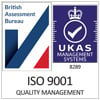In the latest edition of UK Recruiter's Recruitment Smarts Live, Daxtra's EMEA Corporate Account Director Daniel Locke chatted to Louise Triance about how candidate search has evolved through the years and some of the search techniques that recruiters can use today to help them make more placements.
A brief history of candidate search
Candidate search has evolved quickly over the years, from recruiters using a Rolodex to store candidates' details to using advanced AI-powered search, the goal has always been to find the right candidate quickly.
The days of paper and filing cabinets
Back in 1999, there were around 6,500 recruitment agencies registered in the UK, whereas now there are approximately 30,000. Twenty years ago, recruiters would have a Rolodex of candidates which they would use to pick out relevant candidates for a role they needed to fill. Recruiters would also advertise an open role in a newspaper, sit back and wait for the results of their advertisement to come in.
Recruitment teams would also have filing cabinets full of candidate CVs that they could pull out when they wanted to contact a candidate. However, one big problem with this approach is that it was very manual and relied heavily on CVs and other relevant documents being kept organised.
The arrival of databases and manually coding candidates
The ability to fax CVs was a huge step forward at the time, making the process far quicker. Gradually the digitisation of some of these manual processes took place, and recruitment agencies were able to start storing candidate CVs in a centralised database, where they could search for a particular candidate. Job ads in newspapers were also being replaced by advertising on online job boards.
While it was very useful to have access to candidate CVs within a database, recruiters still struggled to find the right candidates. When candidate data became digital, it needed to be coded. A downside of this technique was that it required recruiters to know how to code effectively and remember the codes they used to find candidates, this approach left a lot of room for human error.
Boolean and its limitations
With the goal of finding candidates faster, various search techniques evolved - including faster indexing of the database and keyword searching. These search techniques later morphed into Boolean, which allowed recruiters to search for candidates by combining keywords and phrases using Boolean operators like ‘AND’, ‘OR’ and ‘NOT’ to widen or narrow a search.
While Boolean can be an effective search method for very experienced recruiters who know how to use it, it's more like an art form. It can be easy for a recruiter to make a mistake when constructing a Boolean Search query, which can then invalidate the whole search. Due to the intricacies involved in creating Boolean queries, agencies would typically have one or two experts in the company who would help all the recruiters with constructing viable Boolean searches.
Boolean is a useful search technique to use if you're an experienced recruiter who has dedicated the time needed to become an expert in it. However, for new recruiters who are new to the industry, using Boolean to find the right candidates can be challenging. It's a difficult technique to master, and the terms used to construct a Boolean Search query can lack any kind of context.
What’s now possible with AI search
People are now used to searching for things based on what they mean, rather than just the words they use. It’s no different in recruitment. With our Daxtra Search Nexus technology, recruiters can find candidates based on the context of how they’ve used a term on their CV. The intelligently ranked results show the most relevant candidates at the top, saving them time trawling through pages of search results.
Daxtra Search Nexus does this by automatically categorising terms based on the context into skill, job title, company, language, qualification or industry. Recruiters can set the required experience and proficiency for each individual term, and return or exclude candidates based on when they worked at a company or held a job title.
These categorisation capabilities help recruiters take control of their search to find the right candidates. Daxtra Search Nexus can also suggest related search terms - catering for recruiters at all different levels of experience. Recruiters can also use further automation, including automatically shortlisting candidates who match the job specification. Candidate search truly has evolved and will continue to do so rapidly, making it ever faster and easier to find the right candidate.
If you want to talk about how we can help you find the right candidates in your database and search across external sources, do get in touch.



